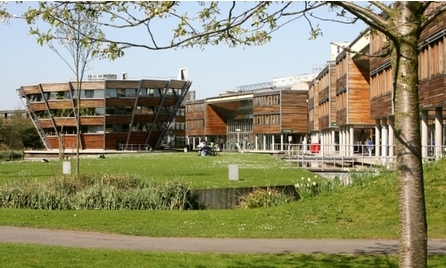
GlaxoSmithKline (GSK) and Nottingham University have teamed up to establish a Centre of Excellence for sustainable chemistry.
The GlaxoSmithKline Carbon Neutral Laboratory for Sustainable Chemistry will be based on the University’s Jubilee Campus and its construction is being supported by a £12m grant from GSK.
The laboratory will focus on research that is of particular relevance to the pharmaceutical industry and will bring together UK academics, postgraduate and postdoctoral researchers and GSK chemists, developing expertise in sustainable chemical synthesis.
The focus on sustainability will be reflected in the building itself, which will incorporate the technologies to allow it to be carbon-neutral over its lifetime.
According to the University, excess energy created by the building will provide enough carbon credits over 25 years to pay back the carbon used in its construction.
Sir Andrew Witty, chief executive of GSK said: “The carbon neutral laboratory will help affirm the UK as a global hub for the future of the life-sciences industry. Our vision is that the science researched within the laboratory will be as iconic as the building itself.
“This is an opportunity to invest further in science in the UK, re-think how we approach the drug discovery process and play a role in contributing to environmental stewardship.”
The announcement builds on GSK’s environmental strategy announced in 2011, with an objective that the company’s operations will become carbon neutral by 2050.
Adopting sustainable chemistries from the start of the drug discovery process will help to reduce the impact of both the discovery and subsequent manufacturing of drugs on the environment, whilst optimising the use of increasingly scarce natural resources.
GSK will also fund a research programme to gather information on aspects of the carbon neutral laboratory that could be transferred into the existing GSK estate to increase efficiency, reduce energy consumption and carbon emissions.
Construction of the laboratory will begin in the spring of 2013 and it is expected to be completed during 2014.

